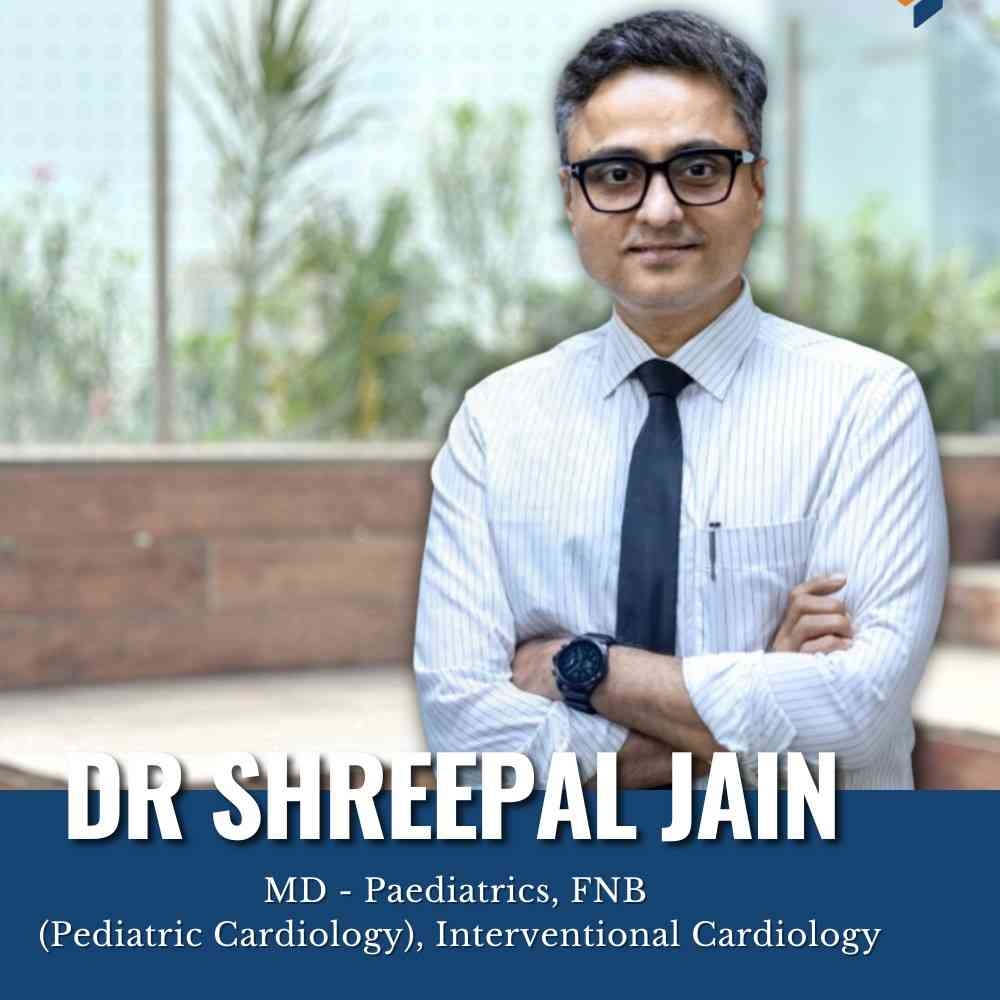Pediatric Heart Disease
Pediatric heart disease refers to any heart condition or abnormality that affects children, from birth through adolescence. These conditions can range from congenital (present at birth) to acquired heart diseases, and they may involve defects in the heart's structure, blood vessels, or the functioning of the heart itself. Early detection, diagnosis, and management are crucial for improving outcomes and quality of life for children with heart disease.Types of Pediatric Heart Disease:Congenital Heart Disease (CHD):Congenital heart defects are structural abnormalities in the heart that occur during fetal development. These are the most common type of heart disease in children.Common types of congenital heart disease include:Atrial Septal Defect (ASD): A hole in the wall between the two upper chambers of the heart (atria).Ventricular Septal Defect (VSD): A hole in the wall between the two lower chambers of the heart (ventricles).Tetralogy of Fallot: A combination of four heart defects, including a VSD, pulmonary stenosis, right ventricular hypertrophy, and an overriding aorta.Coarctation of the Aorta: A narrowing of the aorta, which can restrict blood flow to the body.Transposition of the Great Arteries (TGA): The positions of the aorta and pulmonary artery are reversed, leading to improper circulation of oxygenated and deoxygenated blood.Hypoplastic Left Heart Syndrome (HLHS): A condition where the left side of the heart is severely underdeveloped, requiring immediate intervention.Patent Ductus Arteriosus (PDA): A condition where the ductus arteriosus, a blood vessel that connects the pulmonary artery to the aorta, fails to close after birth.Single Ventricle Defects: These involve having only one functional ventricle (instead of two), which affects the heart's ability to pump blood effectively.Acquired Heart Disease: While congenital heart disease is the most common form, children can also develop heart disease due to infections, inflammation, or other factors. These acquired conditions include:Kawasaki Disease: An inflammatory condition that can cause swelling in the blood vessels, including the coronary arteries, and may lead to heart damage.Rheumatic Heart Disease: Resulting from rheumatic fever, a complication of untreated strep throat, this disease can cause damage to the heart valves.Myocarditis: An inflammation of the heart muscle, often caused by viral infections, which can weaken the heart's ability to pump blood effectively.Endocarditis: An infection of the inner lining of the heart, typically affecting the valves, and often caused by bacteria entering the bloodstream.Arrhythmias: Abnormal heart rhythms, which can sometimes be congenital or acquired due to infections, medications, or other conditions.Symptoms of Pediatric Heart Disease:The symptoms of heart disease in children can vary depending on the specific condition and its severity. Common symptoms include:Cyanosis: A bluish tint to the skin, lips, or nails, indicating low oxygen levels in the blood.Rapid or Labored Breathing: Difficulty breathing or an increased respiratory rate, especially during activity or feeding in infants.Fatigue: Children with heart disease may tire easily, even with minimal exertion.Poor Feeding or Weight Gain: Infants may have trouble feeding and may fail to gain weight as expected.Chest Pain: Though rare in young children, chest pain may occur, especially in older children or those with arrhythmias.Swelling: Swelling of the feet, ankles, or abdomen may occur in cases of heart failure.Heart Murmur: A heart murmur, which is an abnormal sound during a heartbeat, is often one of the first signs of a heart condition.Palpitations or Irregular Heartbeats: Some children may complain of a sensation of their heart racing or skipping beats.Diagnosis of Pediatric Heart Disease:Diagnosing heart disease in children typically involves a combination of the following methods:Physical Examination:The doctor will check for signs such as heart murmurs, cyanosis, abnormal pulse, or signs of fluid retention.Echocardiography:An ultrasound of the heart that allows the doctor to visualize the heart's structure and blood flow in real-time. It is the most common and reliable imaging technique for diagnosing congenital heart defects.Electrocardiogram (ECG):Measures the electrical activity of the heart and can help identify arrhythmias or abnormal heart rhythms.Chest X-ray:Provides an image of the heart and lungs, which can help in identifying enlarged heart chambers or other structural problems.Cardiac MRI or CT:These advanced imaging techniques can be used to assess the heart's anatomy, particularly in more complex cases or when other tests are inconclusive.Blood Tests:In cases of acquired heart disease (e.g., myocarditis or Kawasaki disease), blood tests can help diagnose the underlying cause, such as infections or inflammation.Pulse Oximetry:A non-invasive test that measures oxygen saturation levels in the blood and can help detect cyanosis or heart conditions affecting oxygen levels.Treatment for Pediatric Heart Disease:Treatment for pediatric heart disease depends on the specific condition, its severity, and the child's overall health. The treatment options may include:Medications:Diuretics: To reduce fluid buildup in cases of heart failure.ACE Inhibitors or Beta-blockers: To improve heart function and manage blood pressure.Antiarrhythmic Medications: To treat abnormal heart rhythms.Antibiotics: For bacterial infections like endocarditis or in the case of Kawasaki disease.Surgical Procedures:Many children with congenital heart defects will require surgery to correct the structural abnormalities. This may involve:Cardiac Surgery: To repair or replace heart valves, close septal defects (ASD or VSD), or correct defects like tetralogy of Fallot or coarctation of the aorta.Heart Transplant: For children with severe heart failure or end-stage heart disease that cannot be treated by other means.Catheter-Based Interventions:Some conditions, such as atrial septal defects or patent ductus arteriosus, can be treated with catheter-based procedures, where a catheter is inserted through the blood vessels to close the defect or widen a narrowed blood vessel.Cardiac Rehabilitation:Children recovering from surgery or with heart failure may benefit from a cardiac rehabilitation program, which includes supervised physical activity, education on lifestyle changes, and psychological support.Follow-Up Care:Regular check-ups with a pediatric cardiologist are essential for children with congenital heart disease, even if they have undergone successful surgery. Long-term follow-up helps in monitoring heart function, detecting complications, and providing ongoing care.Prognosis and Quality of Life:The prognosis for children with heart disease depends on the specific condition, its severity, and how early it is diagnosed and treated. Many children with congenital heart disease who receive early treatment can lead relatively normal lives, though they may require ongoing care and monitoring. In some cases, children with more complex heart conditions may face long-term health challenges, including the need for additional surgeries or treatments in adulthood.Children with heart disease are often able to participate in physical activities, but the level of intensity and the type of activity should be tailored to their individual condition and abilities, as advised by their cardiologist.Conclusion:Pediatric heart disease is a diverse and complex field that involves both congenital and acquired conditions affecting children’s hearts. Early detection and intervention are key to improving the outcomes for children with heart disease. With advancements in medical and surgical treatments, many children with heart disease now live longer, healthier lives. However, lifelong monitoring and care are often necessary to manage potential complications as these children grow older.
READ MORE












